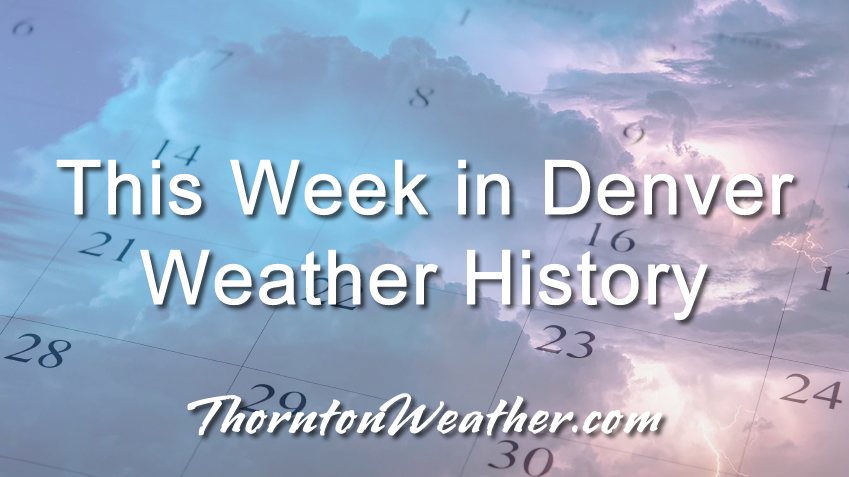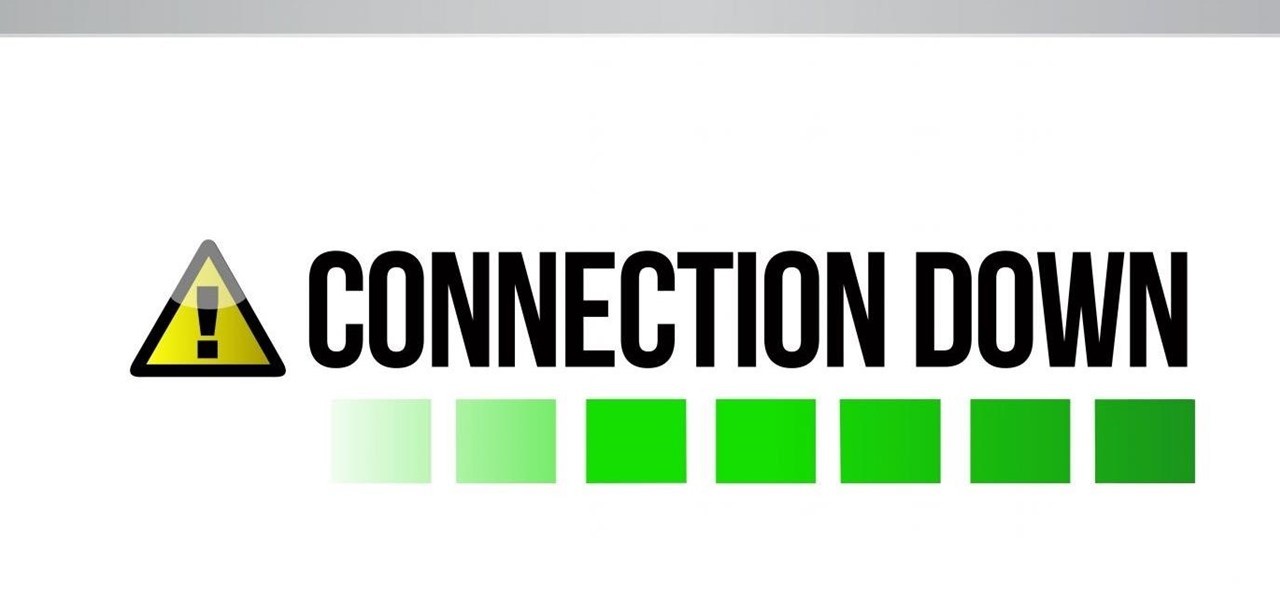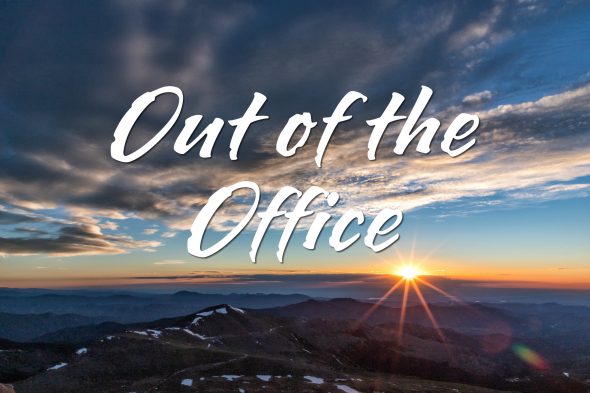 June is the month of the year when Colorado receives the majority of its severe weather and that is seen in our look back at this week in Denver weather history. Also notable are several historical wildfires, including the Hayman blaze.
June is the month of the year when Colorado receives the majority of its severe weather and that is seen in our look back at this week in Denver weather history. Also notable are several historical wildfires, including the Hayman blaze.
From the National Weather Service:
1-30
In 2012…it was the hottest June in Denver since weather records began back in 1872. The average temperature for the month was 75.0 degrees which was 7.6 degrees above normal. There were a total of seventeen 90 degree days in the month of June. The highlight of record setting month was a stretch of five consecutive 100 degree days from the 22nd to the 26th. This was only the third time in Denver weather history in which this happened. Two of the high temperatures during the stretch peaked at 105 degrees… Which set the all-time record for the month of June and tied the all-time maximum temperature for Denver.
7-9
In 1979…rain…at times with thunder on the 7th…fell almost continuously through the morning of the 9th. Rainfall totaled 2.28 inches at Stapleton International Airport over the 3 days. High temperature of only 49 degrees on the 8th was a record low maximum for the date.
8
In 1873…lightning struck and killed one man and damaged several houses. The thunderstorms produced heavy rain in the city…which caused a great deal of water damage. At 2:40 pm heavy rain began and by 4:00 pm 1.40 inches of rain had fallen. Two buildings under construction…with a projected cost of 100 thousand dollars…were badly damaged. The stone foundation and some of the brick walls were carried away by the storm waters. Many basements were flooded…which damaged goods stored there. Rainfall totaled 1.71 inches.
In 1964…lightning struck a building in Boulder…starting a fire and burning two workmen.
In 1968…a severe thunderstorm flooded streets…and hail- damaged trees and gardens…including flowers at a large commercial nursery in Boulder.
In 1969…severe hail damaged property…trees…and gardens… And heavy rain flooded streets and underpasses throughout metro Denver. The heaviest amounts of rain fell in south Denver and Englewood where unofficial totals of 5 to 6 inches were reported. Hail accumulated to 3 or 4 inches on the level and 2 to 3 feet deep in drifts. Mud…debris…and hail carried by the heavy runoff clogged drains and increased the amount of flooding. About 40 cars and a large truck were inundated at an underpass on an interstate highway…and several more were inundated or buried in mud in other areas. A large number of basements were flooded. Streets and highways were heavily damaged in some areas. Rainfall totaled 1.66 inches at Stapleton International Airport.
In 1974…a late spring storm dumped 1.79 inches of rain over metro Denver…causing local flooding. Strong gusty winds accompanied the storm…downing some power and telephone lines. Northwest winds gusted to 56 mph at Stapleton International Airport where a trace of snow fell. Measurable snowfall occurred at mid-day over Aurora and suburban areas to the south of Denver. A number of people were temporarily stranded in the mountains west of Denver where heavy snow fell. Low temperature of 37 degrees equaled the record minimum for the date. High temperature of 50 degrees was a record low maximum for the date.
In 1986…strong thunderstorm winds blew down a garage wall in Littleton and caused minor roof damage to several homes. Boats were overturned and damaged at a sporting goods store nearby. As the storm moved northeast it produced a small tornado…which touched down in extreme southeast Denver and moved northeast into Aurora. The twister did most of its estimated one million dollars damage shortly after touching down in an apartment complex and a shopping center. Two apartments were completely unroofed; wooden chimney facings were demolished and metal pipes were twisted. Many trees up to 25 feet high in the complex were uprooted. Doors were ripped off their hinges…and several parked cars were damaged. In the shopping center…a wall of a building was stripped of its brick facing…and many windows were broken. The twister picked up an aluminum rowboat…carried it 250 feet over some apartments…and deposited it in a vacant storefront. Around 200 cars were damaged in the shopping center. Benches bolted to the pavement were knocked over. Six people suffered minor injuries caused by flying debris. After hitting the shopping center and apartment complex…the tornado moved northeast into a residential area where it toppled some trees and damaged several fences. The same storm later produced 3 separate small tornadoes 5 miles north of Watkins.
In 1987…torrential rain produced extensive flooding across metro Denver. I-25 was closed for a time through central Denver…and a trailer park in Lakewood was partially evacuated due to high water. Several streets in Boulder were closed due to flooding. There was extensive basement flooding and water damage in Lakewood and southeast Denver. Lightning hit a power plant in Denver that supplied electricity to storm drain pumps which exacerbated street flooding in some areas. Rainfall from the thunderstorms totaled 1 1/2 to 2 inches at many locations in Lakewood central and northeast Denver. The heaviest amount of reported rain was in Lakewood where 2 1/4 inches fell in just 2 hours. At Stapleton International Airport…1.62 inches of rain fell in an hour. Rainfall totaled 1.76 inches for the day.
In 1988…a tornado touched down 15 miles northwest of Bennett and stayed on the ground for 15 minutes. The twister was observed by national weather service personnel at Stapleton International Airport. No damage was reported.
In 1989…a small tornado hit a neighborhood in southeast Aurora. The twister hit a dozen homes…blowing out windows…knocking down fences…and partially unroofing one house. About a half dozen trees were felled. A basketball pole was severely bent. The tornado was on the ground for about 2 minutes. Total damage was estimated at 50 thousand dollars. Lightning also struck a home in Parker…causing 25 hundred dollars damage.
In 1992…very heavy thunderstorm rains drenched southwestern weld and eastern Boulder counties. Measured rainfalls of over 2 inches an hour caused St. Vrain Creek to rise 2 feet out of its banks. Boulder creek was also out of its banks along U.S. Highway 287. I-25 flooded with 3 to 5 feet of water along a 9-mile stretch from the Erie exit to the Frederick exit. The highway was closed for over 6 hours while snowplow drivers and farmers with tractors rescued stranded motorists. Water rose into homes along south Boulder road in Lafayette. Several small county roads were washed out along the Boulder County/Weld County line. An off-duty National Weather Service employee measured 3/4 inch hail in Thornton. Several locations north of Denver had small hail up to 6 inches deep. A funnel cloud was spotted 18 miles northeast of Stapleton International Airport.
In 1998…severe thunderstorms dropped large hail across metro Denver. Hail as large as 1 3/4 inches in diameter fell near columbine in Jefferson County. One inch diameter hail fell in Aurora and Littleton with 7/8 inch hail in Arvada and 3/4 inch hail at Centennial Airport… Near greenwood village…and in Parker.
In 2004…heavy rain and large hail caused flooding and flash flooding across northeast Jefferson County. In Golden… Heavy rains triggered a small mudslide on U.S. Highway 6 near the intersection of Colorado highway 119. Automated rain gages in the area registered 2 to 3 inches of rainfall in one hour. Near the Colorado Mills mall…numerous streets were inundated with 1 to 3 feet of water and hail…which stranded several vehicles…including a fire engine. About 30 basements were flooded in Golden and Lakewood. Many windows in both homes and cars were shattered by the large hail. Hail as large as 1.5 inches in diameter was measured in and near Golden with hail to nearly an inch in diameter a few miles north of Evergreen.
In 2007…the low temperature in Denver bottomed out at 31 degrees…which established a new record minimum for the date. It also became the latest date of the last freeze in Denver.
In 2014…in Aurora…a tornado touched down near the Blackstone Country Club…it lifted some golf carts and flipped an empty construction trailer. One of the carts was thrown on top of a caddy walking nearby; he was taken to a hospital with minor injuries. It was assigned an EF-1 rating. In Englewood…lightning struck a tree which damaged two nearby homes and a truck. Large hail…from 1 to 1 1/2 inches in diameter…was reported near Buckley Air Force Base and near Castle Rock. Other short lived tornadoes touched down near Byers and Roggen.
In 2019…severe thunderstorms erupted around metro Denver late in the afternoon and spread eastward onto the plains. The largest hail fell around Castle Rock…where hail up to 2 1/2 inches was reported. Elsewhere…the hail ranged from 1 to 1 1/2 inches.
9
In 1900…an apparent cold front produced north winds to 42 mph with gusts to 47 mph.
In 1923…heavy rainfall totaled 2.18 inches in downtown Denver…where northwest winds were sustained to 27 mph. Heavy rain also fell in Boulder…causing flooding on Boulder and south Boulder creeks.
In 1939…post-frontal sustained northwest winds to 35 mph produced some blowing dust…which reduced the visibility to one mile at times during the afternoon. Dusty conditions prevailed into the early evening. The airport station reported a maximum wind of 56 mph. A few minor injuries and some damage resulted. A few trees were uprooted…some fruit was blown from trees…and a section of power lines was blown down.
In 1959…dry thunderstorm winds…estimated to near 70 mph… Toppled a 40-foot-high poplar tree…which was 4 to 5 inches in diameter…near Cherry Creek dam. The Colorado state patrol reported a possible tornado 1 mile south of the dam.
In 1960…strong gusty winds tore the roofs from 2 patios in Aurora. One of the roofs was blown over a house and landed on a car damaging its top. A house trailer was also overturned. Other minor damage was reported to roofs… Windows…and trees in Aurora. A thunderstorm wind gust to 43 mph was recorded at Stapleton Airport.
In 1963…golf ball size hail fell at Cheery Creek Reservoir.
In 1967…a small tornado damaged trees and a dwelling in south Denver. The storm touched down at the intersection of 1st avenue and Harrison Street and moved northeast to the intersection of 3rd avenue and Albion Street. Damage included 3 small roofs removed…15-20 large trees uprooted…one car overturned and thrown against a house… Plus other minor damage. A funnel cloud reported at the same time 10 miles north of Denver possibly touched ground. Later…funnel clouds were reported 12 miles south-southeast of Stapleton International Airport…10 miles southwest…and 5 miles north. A tornado was sighted 3 1/2 miles east of Stapleton International Airport by weather bureau personnel for a duration of 5 minutes. Heavy rain and some hail fell over much of the area.
In 1974…the start of the shortest seasonal snow free period on record…94 days…occurred with the last snow of the season…a trace…on the 8th. The first snow of the next season occurred on September 11th when a trace of snow fell at Stapleton International Airport. A funnel cloud was observed just east of Aurora and a small funnel was sighted just northeast of Stapleton International Airport.
In 1985…a thunderstorm wind gust to 62 mph was reported at Golden Gate Canyon in the foothills west of Denver.
In 1986…a thunderstorm…which dumped heavy rain and caused some street flooding across north metro Denver…produced a small tornado 5 miles east of Brighton. No damage was reported.
In 1987…strong thunderstorm wind gusts in Conifer destroyed a porch on a house; the wind gust apparently picked up the porch and dropped it on a man…killing him. The wind also damaged the roof of the house and a nearby barn. The same thunderstorm spawned a tornado…which touched down briefly just south of Lakewood. No damage was reported. Up to 3 inches of rain fell in a short time 8 miles southwest of Littleton. A few businesses in Englewood suffered minor water damage. A tornado was sighted between Watkins and Bennett. It was on the ground for 15 minutes. A weak tornado also touched down 4 miles southwest of Castle Rock. The twister tossed an aluminum shed into the air and carried it about 100 feet. A funnel cloud was sighted 15 miles east-northeast of Stapleton International Airport.
In 1988…golf ball size hail fell in Conifer along with 1.30 inches of rain. Three miles north of Louisville…1.10 inches of rain fell in 20 minutes. Ping pong ball size hail was measured in Arvada.
In 1990…3/4 inch hail fell in Castle Rock.
In 1991…hail two inches in diameter fell near Evergreen. Hail to 1 inch diameter fell in Lakewood where a funnel cloud was also sighted. One inch diameter hail was also reported in Aurora.
In 2002…high temperatures…low relative humidities…and strong gusty winds allowed the Hayman wildfire…located in the foothills to the southwest of Denver…to become the largest wildfire in the state’s history. Although the fire was initially started by a U.S. Forest Service employee…the ongoing drought and dry conditions allowed the fire to spread rapidly out of control. The wildfire consumed nearly 138 thousand acres of forest land and 133 homes before it could be contained and finally extinguished on June 30th. About 1800 households had to be evacuated during the blaze. Southwest winds aloft swept the smoke plume directly over metro Denver…creating poor air quality and blocking the sun. Much of metro Denver choked on smoke with the southern suburbs receiving the most. Smoke and ash restricted surface visibilities to a mile or less at times in the Denver and Castle Rock areas and to 2 miles at Denver International Airport.
In 2003…thunderstorm winds gusted to 51 mph at Denver International Airport. The storm produced only a trace of rain.
In 2004…severe thunderstorms produced large hail across portions of metro Denver for the second day in a row. The most extensive damage occurred across southern sections of metro Denver in Aurora…Lakewood…Littleton…and south Denver. The combined damage to homes and vehicles…not including commercial buildings…was estimated at 146.5 million dollars…making the event the 4th costliest insurance disaster in the state’s history. Hail as large as 2 1/4 inches in diameter fell near southern Aurora with hail to 1 3/4 inches in the city of Denver and in Lakewood. Hail to 1 1/2 inches fell near Morrison with 1 inch hail measured in Thornton…near Buckley Air Force Base…and near Roggen. Hail to 3/4 inch diameter fell in Littleton and near Conifer. A small tornado touched down near Bennett…but did no damage.
Continue reading June 8 to June 14: This Week in Denver Weather History →













































































